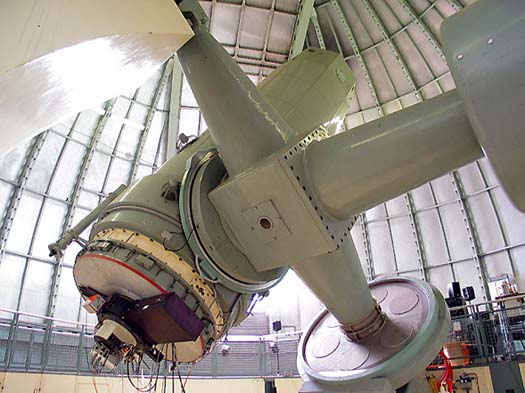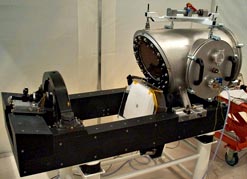HALF OF KEPLER'S GIANT EXOPLANET CANDIDATES ARE IN FACT NOT PLANETS
An international team including researchers from the IAP made a five-year follow-up campaign of the events discovered by Kepler as likely caused by giant exoplanets, using the SOPHIE spectrograph at the Observatoire de Haute-Provence. These observations show that about half of the “candidate” events are in fact not caused by planets. By removing these “false positives” from the list of planets, this work leads to improvements in understanding the physical properties of giant exoplanets.
NASA's space telescope Kepler, launched in 2009, identified thousands of “exoplanet candidates” by observing the periodic and tiny dips in the luminosity of stars produced when planets gravitating around them cross in front of their stellar disks (referred to as transits). Several alternate scenarios not requiring the presence of planets can however mimic the signature of a planetary transit. Spectroscopic observations of the candidates are thus needed to establish or rule out the planetary nature of the transit events.
A spectroscopic follow-up was performed between 2010 and 2015 with the SOPHIE spectrograph mounted on the 193-cm Telescope of the Observatoire de Haute-Provence, using the radial velocity technique. The start sample contained 8826 planetary candidates detected by Kepler (from the list of “Kepler objects of interest” or KOI). The sample size was progressively reduced to 129 by selecting only candidates corresponding to giant planets (gas rich planets much more massive than the Earth, such as Jupiter), as well as by removing already known false positives and stars too faint to be observed by SOPHIE. The study focused on planets with orbital periods of 400 days and less, so that at least three transits were observed during the four-year mission of Kepler. This extensive spectroscopic follow-up shows that 54.6 +/- 6.5 % of the giant exoplanet candidates discovered by Kepler are in fact not planets. Most of these “false positives” are eclipsing binary stars, which are pairs of stars whose orbital planes lie in our line-of-sight, producing periodic mutual eclipses. A smaller part of the “false positives” are brown dwarfs (much more massive objects than giant planets).
This work provides a list of actual giant exoplanets, free from contamination from other astrophysical phenomena. The planets identified and validated from that study are well characterized; in particular their mean densities are known, as SOPHIE provides measurements of the masses of the planets, and Kepler their radii. From the new list of exoplanets, one can derive that 4.6 +/- 0.6 % of Solar-type stars host giant planets with orbital periods up to 400 days. The physical properties of these planets allow researchers to constrain the mechanisms that drive the formation and evolution of planetary systems, which are presently only partially understood.
Associated scientific publication: “SOPHIE velocimetry of Kepler transit candidates. XVII. The physical properties of giant exoplanets within 400 days of period”, from A. Santerne, C. Moutou, M. Tsantaki, F. Bouchy, G. Hébrard, V. Adibekyan, J.-M. Almenara, L. Amard, S. C. C. Barros, I. Boisse, A.S. Bonomo, G. Bruno, B. Courcol, M. Deleuil, O. Demangeon, R.F. Díaz, T. Guillot, M. Havel, G. Montagnier, A. S. Rajpurohit, J. Rey and N. C. Santos, 2015, Astronomy & Astrophysics, in press (http://arxiv.org/pdf/1511.00643.pdf).
Contact:
Guillaume Hébrard
Institut d'astrophysique de Paris CNRS-UPMC
Tel.: 33-1 44 32 80 78
hebrard at iap dot fr

The 193-cm Telescope at the Observatoire de Haute-Provence

The SOPHIE spectrograph
December 2015
